On the night of 23rd / 24th November 1943 the crews of six Halifax aircraft belonging to 1658 Heavy Conversion Unit were tasked with flying night cross country training exercises. The weather on this night was forecast to be extremely bad but for some reason the Commanding Officer of the Riccall-based training unit allowed the exercise to continue and these six aircraft were the only six aircraft in the whole of the Yorkshire based Heavy Conversion Units to carry out training flights on this night. Of these six aircraft, two returned early with icing problems; one of which (Halifax DT541) crashed near Riccall, another aircraft crashed into the side of the substantial peak of Great Whernside in the Pennines. Only two of the six crews completed the exercise, though one of these is thought to have suffered had engine problems caused by the effects of icing.
At 23.27hrs on 23rd November 1943 the crew of Halifax DT578 took off from their base at Riccall near Selby, Yorkshire for the exercise and headed towards St.Bees Head on the north-west coast, from there the turning points of the exercise were to have been St.Abbs Head, Hexham, Sleaford and Northampton, then return to base. The major problems occurred for the aircraft because of the severe weather over the Pennines. The weather conditions consisted of severe turbulance, poor visibility, upto gale Force 8 winds with torrential rain and icing conditions occurring at 4000 feet above the ground. At just before midnight an aircraft was plotted by the Royal Observer Corps near Kettlewell, in Upper Wharfedale, to be flying low and heading in a southerly direction, it was then heard circling and possibly trying to gain height. Soon after an aircraft was heard in a dive from which it did not recover, it was later found that Halifax DT578 had crashed into Great Whernside killing all on board. The RAF's AM Form 1180 suggested that both DT578 and JB926 could have collided causing both aircraft to have crashed but this was later ruled out in the full AIB investigation as the crew of Halifax JB926 had transmitted their position to have been near St.Bees Head at the time Halifax DT578 crashed and therefore neither could have been involved a collision over Yorkshire, and neither were the aircraft involved in collisions with the other 1658 Heavy Conversion Unit aircraft in the air.
I have yet to find any information stating why any of these aircraft were ever in the air when the whole of the Yorkshire-based flying training units were aware of the severe weather forecast on this night. The Commanding Officer of 1658 Heavy Conversion Unit, W/CO Francis William Thompson DFC RAFVR (60758), was replaced soon after the events of this night having been awarded the Air Force Cross for his long term work as an instructor at 1658 H.C.U. (Gazetted on 1st January 1944). He was replaced by W/Co Henry Howard Drummond DFM RAFVR (112544), who was himself was the Senior Flight Commander at the time of the accidents and who was also awarded the Air Force Cross for his work as an instructor at 1658 H.C.U. (Gazetted on the same date). I strongly suspect W/Co Thompson was moved on from his roll as the commanding officer following the investigation as he ordered flying training to continue despite having received weather reports suggesting this was unwise.
Pilot - Sgt Stanley Chadwick RAFVR (1453551), aged 21, of Walney Island. Buried Walney Island Churchyard, Lancashire.
Navigator - Sgt Frank Weldon Robson RAFVR (1451671), aged 30, of Hull. Buried Hull Northern Cemetery, Yorkshire.
Flight Engineer - Sgt Frank James Robinson RAF (538137), aged 25?, of Chesterton. Buried Chesterton Churchyard, Newcastle under Lyme, Staffordshire.
Wireless Operator / Air Gunner - Sgt Norman Sebright Martin RAF (1600285), aged 19, of ? Buried East Finchley Cemetery, Middlesex.
Bomb Aimer - Sgt Donald Paget Aitken RAFVR (1322354), aged 21, of Bognor Regis. Buried Bognor Regis Cemetery, Sussex.
Air Gunner - Sgt Ernest Stabler RAFVR (1784108), aged 20, of Distington. Buried Distington Churchyard, Cumbria.
Air Gunner - Sgt Kenneth Vincent RAFVR (1819902), aged 19, of Wednesfield. Buried Wednesfield Churchyard, Staffordshire.
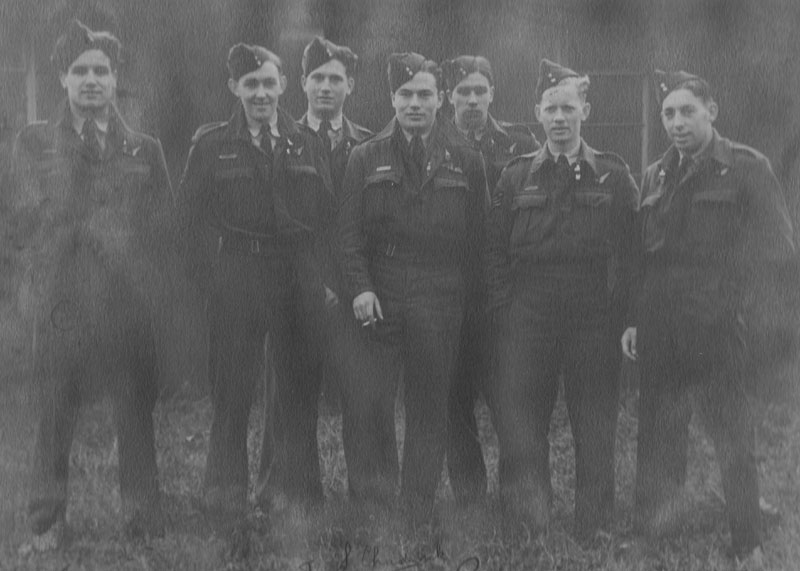
This photograph shows the crew of Halifax DT578 when it struck Great Whernside. The original copy of this owned by the son of the navigator Mr David Robson, it shows signatures of the crew at the foot of the page and these are now very faded. I believe those pictured to be are (left to right)... Martin, Stabler, Vincent, Chadwick, Aitken, Robson & Robinson. My thanks to Mr David Robson for the photograph.

Ernest Stabler's half-brother Joseph arranged for the creation of a memorial plaque and in June 2016 he and his wife, David Robson and his wife, with wider members of the Robson family placed the memorial at the crash site.
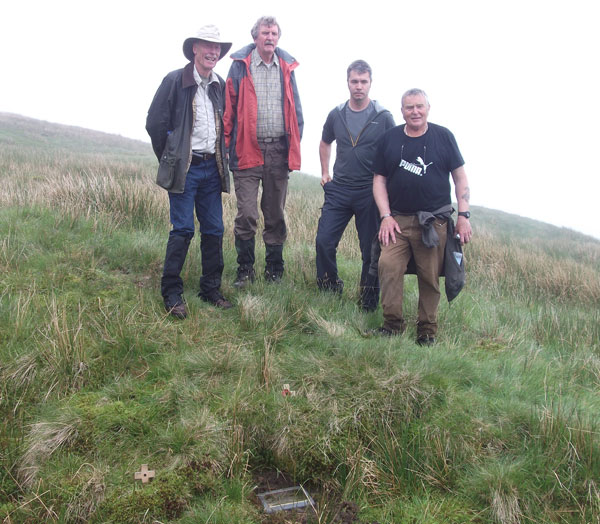
Mr David Robson, Mr Joseph Stabler, Graham Sharpe and I pay our respects at the site in June 2016. In May 2009 David Robson and his wife flew in from Idaho, U.S.A. to visit Kettlewell and the crash site on Great Whernside, they later returned to North Yorkshire in 2013, again in June 2016 when we returned to the crash site with Joe Stabler and his wife and also wider members of the Robson family and then in May 2018.


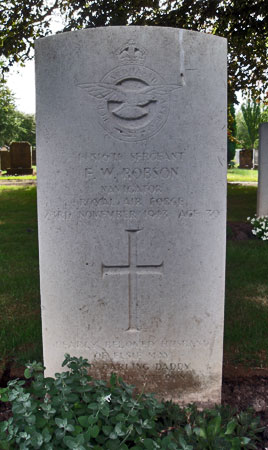
Frank Robson and Ernest Stabler and their graves. I thank Ernest Stabler's half-brother Mr Joseph Stabler for contacting me in December 2014, for kindly supplying this photograph and for the additional information he was able to provide.
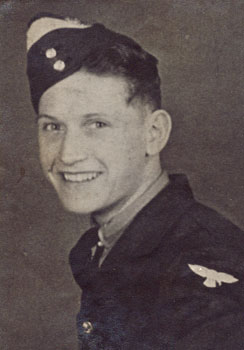
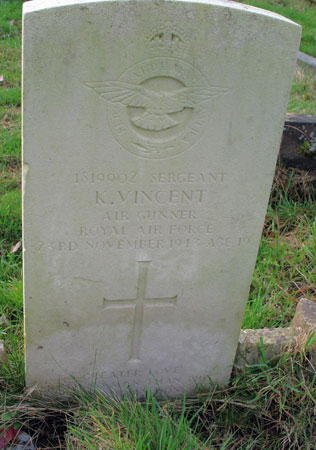
Kenneth Vincent (to whom I credit his niece Wendy Vincent) and his grave in Wednesfield (to whom I credit another niece Julia Saint). I thank all members of the wider Vincent family for their contact and the photographs and information they have been kindly able to supply.
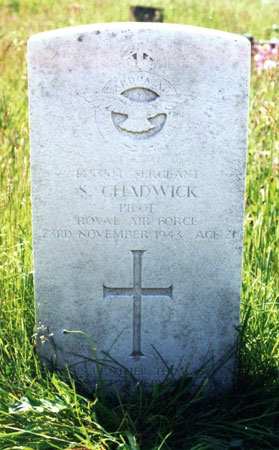
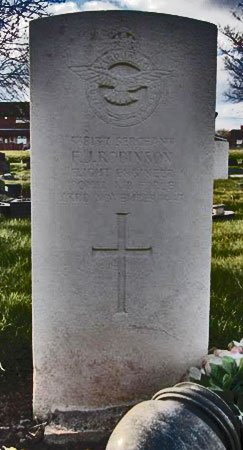
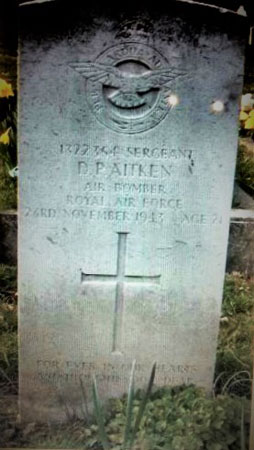

Stanley Chadwick's grave at Walney Island (thanks to Mr David Earl for this photograph), Frank Robinson's in Staffordshire (found on the internet), Donald Aitken's in Bognor Regis (photograph via Mr Joe Stabler), Norman Martin's in East Finchley (photograph via Mr Joe Stabler).

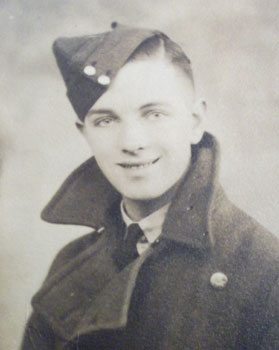
These two photographs were found in a collection by Joe Stabler. The airman on the left is probably Norman Martin; comparing this with the group photograph above they are very similar. The young man shown in the right remains unidentified. I would welcome any information to confirm who these photographs depict.
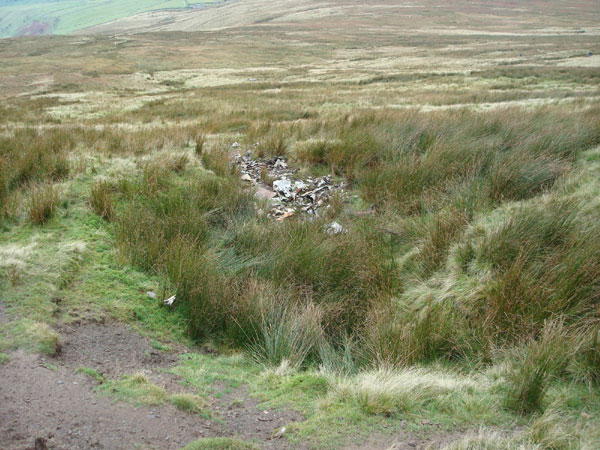
The majority of the remaining wreckage on the site is in the impact crater, as a stream now runs through the crater much of the wreckage is now in a poor condition.
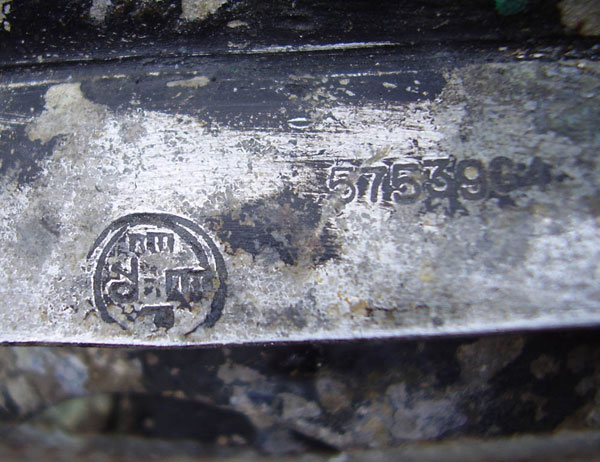
Being often contacted by people asking how we know which site is which, this part with a readable number set and inspection stamp is one which is a good example of how this is done. It shows one of a number of remaining pieces at the site with the "57" prefix; which this aircraft was a HP57 Halifax (HP57 being Handley Page's design number for the what became known as the Halifax type) and "EEP" for English Electric, Preston where DT578 was made.

The site hasn't actually changed much in the last forty years despite a number of the more interesting items being taken away. The photograph above shows the site as it was in 1974 when Jim Rutland visited. I had first visited the site on Great Whernside in November 2002 and since then I have been back a number of times. This site is probably the one incident that I receive the most emails mainly from the many young people who once stayed at Hagg Dyke Scout Centre and were taken to this site as part of their visit.
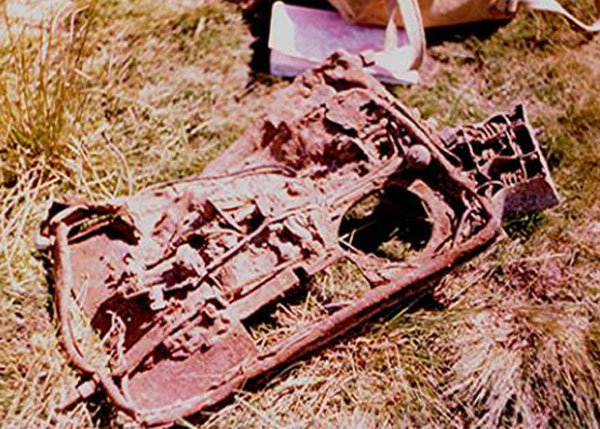
The remains of the aircraft's bomb sight computer dug up by Graham Sharpe in 1972 and photographed by Jim Rutland in 1974 but the whereabouts of it today is not known.

A memorial to the aircrew losses on Great Whernside is to be found inside the chapel at Hagg Dyke.

I have also attempted to detail the history of Halifax DT578 here using the various operational record books for the squadrons who used it (but this is a work in progress). Halifax DT578 was built to contract B.982938/39 by the English Electric Company Ltd. at their Samlesbury factory, near Preston, and awaiting collection on 26th October 1942. It was built as a B.II Series I variant with a front turret and was initially taken on charge by 78 Squadron, based at Linton on Ouse four days later on 30th October 1942. 78 Squadron used the aircraft at least twice on operational flights in the following weeks; on 16th November 1942 it was flown operationally to the attack targets in Northern France and on 22nd November 1942 it was flown operationally to Stuutgart. Any other flights made by 78 Squadron in DT578 have yet to be discovered. On 24th December 1942 it was transferred to 77 Squadron at Elvington who were in the process of converting from Whitleys to Halifaxes. It then carried the 77 Squadron coding of "KN-T" and flew as part of the first few operational Halifax 77 Squadron sorties. The first was on 29th January 1943 when it was flown on a sea search for a crew belonging to another squadron who were reported missing. During February 1943 it was used regularly on operations; on the 4th, 6th (when the mines would not release), 13th, 16th, 25th (but suffered a glycol leak before take off so did not take off), 26th (but an engine failed outbound so the crew jettisoned the bombs and returned to base) and 28th February. The regular crew of DT578 during February 1943 was captained by F/Sgt B Pickin (F/Sgt Bernard Pickin RAFVR (1288760) ?) who was nearing the end of his Tour of Operations having served with 77 Squadron as far back as June 1942. It's last known flight with 77 Squadron was a mine laying flight on 2nd March 1943 with Sgt G.Watson as captain. On 17th March 1943 it was transferred to 1658 Heavy Conversion Unit at Riccall. On 16th May 1943 while the engines were being run up on the ground at Riccall one of the propeller blades disintergrated and fragments of it struck and entered the fuselage. The minor damage would have been repaired on site at Riccall and it continued to be used to train crews until the fatal crash on Great Whernside on 23rd November 1943. Following the crash the damage assessment recorded was Cat.E2/FA and it was struck off charge on 30th November 1943. It is listed as having flown a total of 382 hours flying time up until the crash. The aircraft may well have been converted to a B.II Series I (Special) variant by the time it crashed on Great Whernside.